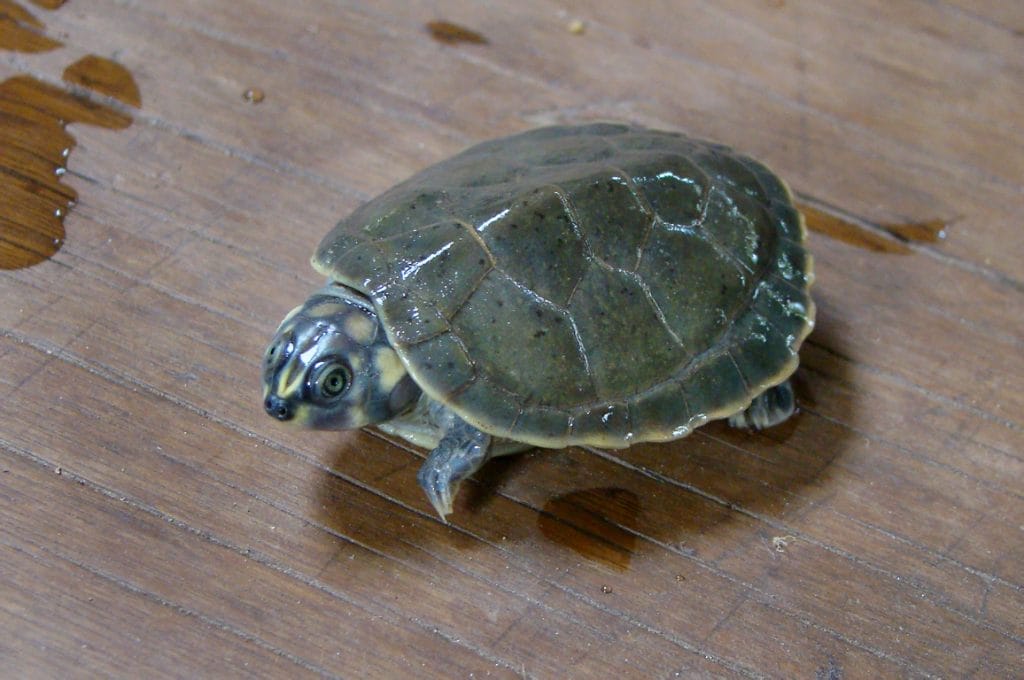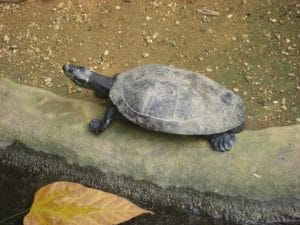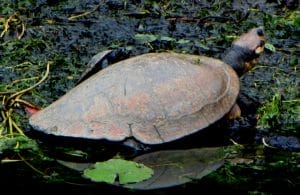Podocnemis sextuberculata (Six-tubercled Amazon River Turtle)
Home > Turtle Database > Podocnemis sextuberculata (Six-tubercled Amazon River Turtle)

Podocnemis sextuberculata, also known as the Six-tubercled Amazon River Turtle, is a freshwater turtle found mainly in the Amazon Basin. It’s named after the six bony projections on its shell, which help set it apart from other river turtles in the region.
Native To These Regions
Acre (Brazil), Amazonas (Brazil), Colombia, Pará (Brazil), Peru, Rondônia (Brazil), Roraima (Brazil)Native Turtle Species Map – Find Turtles by Region
Scientific Classification
Kingdom: Animalia
Phylum: Chordata
Class: Reptilia
Order: Testudines
Family: Podocnemididae
Genus: Podocnemis
Species: P. sextuberculata
Common Names
Six-tubercled Amazon River Turtle
Six-tubercled River Turtle
Tartaruga-de-tabuleiro (in Portuguese)
This Hilarious Turtle Book Might Know Your Pet Better Than You Do
Let’s be real—most turtle care guides feel like reading a textbook written by a sleep-deprived zookeeper.
This one’s not that.
Told from the snarky point of view of a grumpy, judgmental turtle, 21 Turtle Truths You’ll Never Read in a Care Guide is packed with sarcasm, sass, and surprisingly useful insights.
And hey—you don’t have to commit to the whole thing just yet.
Grab 2 free truths from the ebook and get a taste of what your turtle really thinks about your setup, your food choices, and that weird plastic palm tree.
It’s funny, it’s honest, and if you’ve ever owned a turtle who glares at you like you’re the problem—you’ll feel seen.
Identification
Description
This turtle has an oval, flattened carapace with six small tubercles or raised bumps near the front. The color ranges from grayish-brown to olive. Its plastron is pale yellow and less domed than some relatives. The head is blunt, with a dark top and lighter sides.
Sexual Dimorphism
Females are larger than males and have shorter tails. Males have longer, thicker tails and more curved claws, especially on the front limbs.
Check more turtles from the Podocnemis genus
Native Origin and Distribution
Geographical Range
Podocnemis sextuberculata is found in the Amazon and its tributaries, especially in Brazil, Colombia, and Peru. Its range overlaps with several other Podocnemis species.
Preferred Habitat
It prefers calm, slow-moving waters like oxbow lakes, flooded forests, and quiet river margins. These turtles thrive in places with soft bottoms and rich aquatic vegetation.
Behavior
Feeding Habits
It is mostly herbivorous, eating aquatic plants, fruits, seeds, and algae. It may also eat small insects or snails if available.
Predators
Eggs and hatchlings are eaten by birds, fish, and mammals. Adults face fewer threats but can be hunted by humans and large carnivores.
Reproduction
Breeding Season
Mating usually occurs during the rainy season. Nesting happens when water levels drop, often from August to November depending on the region.
Reproductive Method
Females lay clutches of up to 20 eggs on sandy riverbanks. The eggs incubate for several weeks, and hatchlings emerge when conditions are right, often with help from rain-softened soil.
Conservation
Extinction Status
Listed as Vulnerable by the IUCN.
Threats
Main threats include habitat destruction, illegal hunting, egg collection, and water pollution. Human settlements and agriculture put pressure on nesting areas.
Conservation Measures
Protected areas have been established in some parts of its range. Conservation groups are working to reduce egg harvesting and educate local communities. Captive breeding and release programs have also started in some areas.
Economic Importance
This species is sometimes hunted for meat and eggs, especially in rural communities. While this has traditional value, it also contributes to its decline. It has limited importance in the pet trade due to its size and protected status.
Interesting Facts
The six tubercles on the carapace are unique and help identify the species quickly.
It plays an important role in seed dispersal in flooded forests.
In some areas, it nests in groups, which is unusual for most turtles.

About Author
Muntaseer Rahman started keeping pet turtles back in 2013. He also owns the largest Turtle & Tortoise Facebook community in Bangladesh. These days he is mostly active on Facebook.














